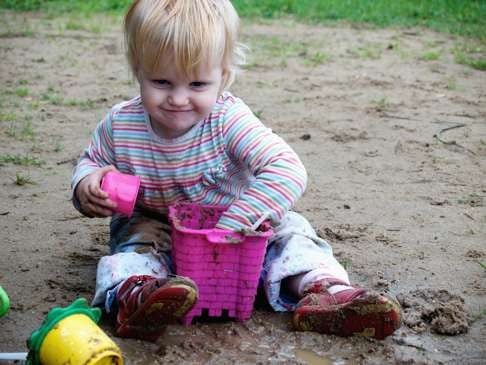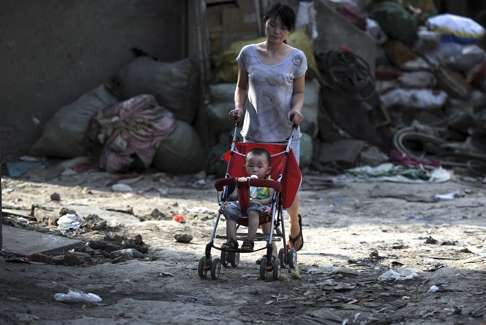
Why children’s allergies are on the rise and how dirt may hold key to reducing cases
Are we too clean for our own good? New studies, presented at the International Congress of Immunology in Melbourne this week, shed more light on the rising incidence of allergies in the developed world

Can being too clean be a bad thing? Emerging research on allergic diseases – a growing epidemic in the developed world, including Hong Kong – seem to suggest so. In one new study involving 57,000 five-year-olds in Australia, scientists found the environment in which the children grew up in greatly affected their risk of developing nut allergies.
Conducted in the state of Victoria, where the third biggest source of migrants is China (behind the UK and India), the study revealed that children who were born in Asia but moved to Australia seem to have complete protection against developing a nut allergy. However, children of Asian descent born in Australia were three times more likely to develop a nut allergy than non-Asian infants.

The finding suggests Asians are at higher risk of developing food allergies for genetic reasons, and provides solid evidence that there’s something in the environment driving the allergy epidemic, said researcher Katie Allen of the Murdoch Children’s Research Institute.
“We see that children who grow up in developing countries are protected from allergic disease, while children who grow up in developed countries have very much higher rates of allergic disease, said Allen, speaking at the International Congress of Immunology in Melbourne on August 22. “We wonder whether the Asian environment activates the immune system in some way in the first few years of life in order to fight infectious diseases that are much more rampant there, whereas if they come to Australia or a developed country they are having less activation of the immune system and therefore increasing their allergy risk as a result.”
Other research presented at the six-day congress – the largest global event in its field and held every three years – provides further evidence of the role environment plays in allergic diseases, or what researchers call the “hygiene hypothesis”.

A study by researchers in Belgium looked at 2,000 children growing up on farms in Germany and Switzerland and established a causal relationship between exposure to the dust from farms and protection against asthma and allergies.
“What we’ve found is [that] when children are exposed to farm dust, they increase expression of a very specific protein called A20, which is crucial to induce the protection,” said the study’s lead researcher, Professor Hamida Hammad from the VIB Life Sciences Institute and Ghent University.
People suffering from allergies and asthma have a deficiency of the protective protein A20, the results show. Some children on the farms still developed allergies, and Hammad explains these children have a genetic variant of the A20 gene which causes the A20 protein to malfunction.
“Children, from about the age of two, need to be exposed to certain environmental triggers like farm dust or bugs, and this will increase expression of A20 in the structural cells in their lungs,” she said.
Professor Mark Larche of Canada’s McMaster University, who presented to the congress his study on a new vaccine against cat allergies, believes children are growing up in an environment that is too clean for their immune systems to properly learn which substances to attack and which to ignore.

In Allen’s study, which appeared in the April 2016 issue of the journal Clinical and Experimental Allergy, 3.4 per cent of metropolitan Victorian children had nut allergies, compared to 2.4 per cent in non-metropolitan areas. Allen thinks the “hygiene hypothesis” is behind this – as well as an important reason why Melbourne has been dubbed the “food allergy capital of the world”.
“Exposure to microbes in the right form, whether it’s getting out to play in the dirt or with dogs or going to farms, appears to be protective – and we’re just not getting enough of that here in the built environment of Melbourne,” Allen said.
A second important factor, she said, is the “vitamin D hypothesis”: previous studies show that children with food allergies are more likely to have low vitamin D levels, and that the further from the equator one lives, the higher one’s risk of food allergy. Australia is the only developed country that does not supplement or fortify its food chain supply with vitamin D, Allen said, and this could explain the vitamin deficiency in Australian infants.

The third and final factor is the way infants are fed food in the first few years of life. “The new consensus guidelines for Australia and around the world is we should no longer delay the introduction of important foods, such as peanut and cow’s milk, in infants’ diets,” says Allen. “They should have these foods introduced in the first year of life soon after solids have commenced, which is about six months of age but not before four months.”
So should all children be rolling around in dirt to boost their health? In Europe, Hammad said, people have started building day care centres within farms so that children under two years old are continuously exposed to hay and cattle to try to induce protection.
“Getting down and dirty is a simple way of looking at it, but we want it to be targeted – we don’t want infants to be getting infections that could potentially kill them. We want them to get friendly bugs,” Allen said. “Rolling around in haystacks seems to be the right way to go, but we’d like to isolate [the mechanism behind the protection] so that we can do it in a way that’s consistent, standardised and safe.”